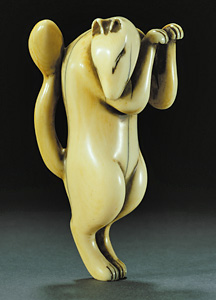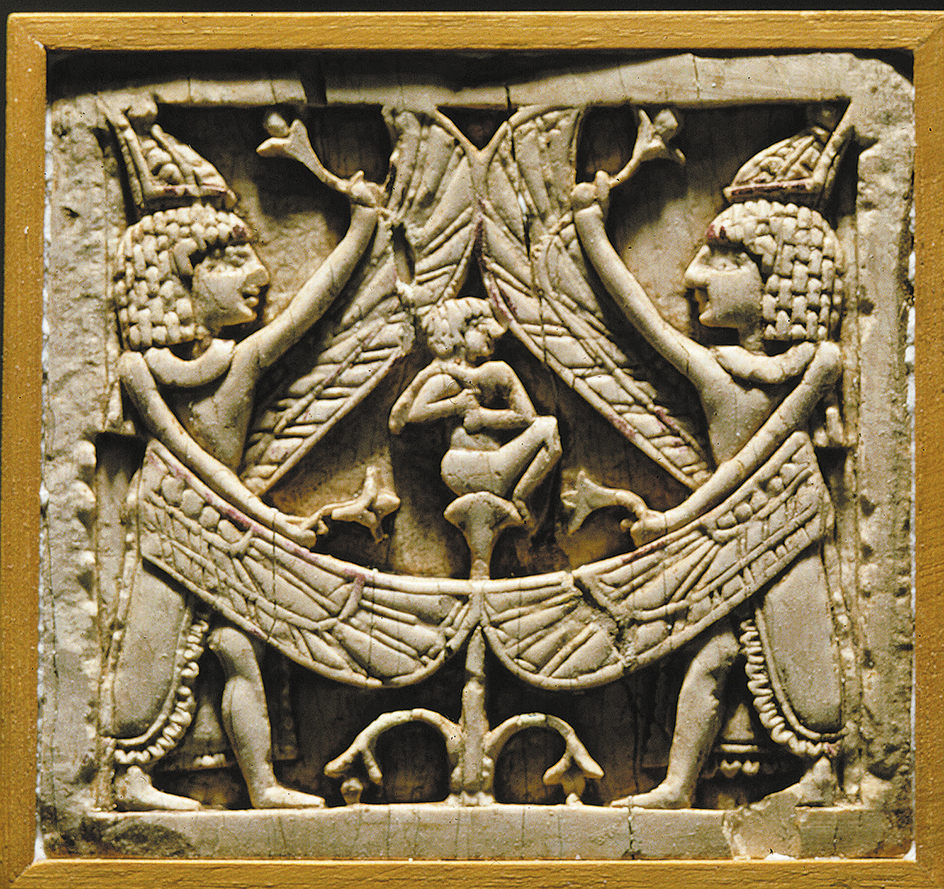Ivory is a hard substance that makes up the main part of the tusks and teeth of certain animals. The tusks of the African elephant are the major source of ivory. Other ivory comes from tusks of the walrus, narwhal, and fossilized prehistoric mammoths and from teeth of the hippopotamus and sperm whale. Polished ivory has been prized for centuries for its luminous beauty. It has been carved into decorative objects and works of art and used to make piano keys and billiard balls.

Characteristics of ivory.
Ivory varies in color from white to pale pink, yellow, or tan. It is a kind of dentin, a bony material beneath the enamel of a tusk or tooth. Sculptors sometimes carve the enamel along with the dentin. In other cases, the enamel is too hard and must be stripped away before carving can begin. Ivory is tough and durable, but it will crack if exposed to extremely hot or cold temperatures. It also should be kept in a place that is not too moist or dry. Ivory is easy to polish and keep clean.
Ivory carving
began in prehistoric times, about 20,000 B.C. But ivory objects were not produced in large numbers until about 8000 B.C., when Egyptians established workshops for ivory carvers. The art form spread throughout the Middle East and to lands along the Mediterranean Sea. In ancient times, people considered ivory as precious as gold and gems. People living in Egypt from the 2800’s to the 2600’s B.C. decorated caskets and furniture with ivory. The ancient Greeks carved huge chryselephantine (gold and ivory) statues of gods and goddesses. The Romans made ivory combs, buttons, hair ornaments, furniture, and writing tablets.

Ivory carving flourished in Europe from the A.D. 500’s through about 1000. Artists of the Byzantine Empire carved reliefs (raised designs on a flat surface) with Christian themes onto plaques, tablets, and caskets. Sculptors and carvers in what is now France and Germany continued the tradition of creating beautiful reliefs. By the 1200’s, artists resumed production of such nonreligious ivory objects as combs and book covers.
Ivory carving declined during the 1400’s and 1500’s because the ivory trade routes from the East were blocked by the Ottoman Empire, which was centered in what is now Turkey. The use of ivory revived in the 1600’s and 1700’s after Europeans discovered new sources in Africa. Artists carved elaborate designs portraying mythological themes onto such objects as boxes, drinking mugs, plaques, and vases. In the 1800’s, sculptors and hobbyists took up ivory carving, creating small statues, model ships, and game pieces.
In North America during the 1800’s, sailors were an important source of ivory carving. They made small carvings or engravings on whale teeth, whalebone, and sea shells. Such carvings are called scrimshaw.
In Asia, the Chinese were the first people to develop ivory carving as an art form during the Shang dynasty (about 1766 to 1045 B.C.). During the Tang dynasty (A.D. 618 to 907), Chinese artists made beautiful carvings for both religious and personal use among the aristocracy. Chinese artists of this period influenced the work of Japanese sculptors, who made small decorative objects with delicate patterns. In the 1700’s, Japanese artists introduced the carved netsuke, a tiny ornamental figure that was strung through a cord tied around the waist.
Ivory today.
During the second half of the 1900’s, the world’s ivory supply became increasingly scarce as the African elephant population declined. Many elephants have been driven from their natural habitats by people who took over the land. Hundreds of thousands of elephants have been illegally killed by poachers who profit from the sale of the tusks. In 1989, all trade in ivory and other elephant products was banned by the Convention on International Trade in Endangered Species of Wild Fauna and Flora (CITES), an international agreement administered by the United Nations. Beginning in 1997, however, CITES members have allowed such African countries as Botswana, Namibia, and South Africa to sell, on a limited basis, small amounts of ivory to Japan and other countries.
See also Elephant (Protecting elephants).
